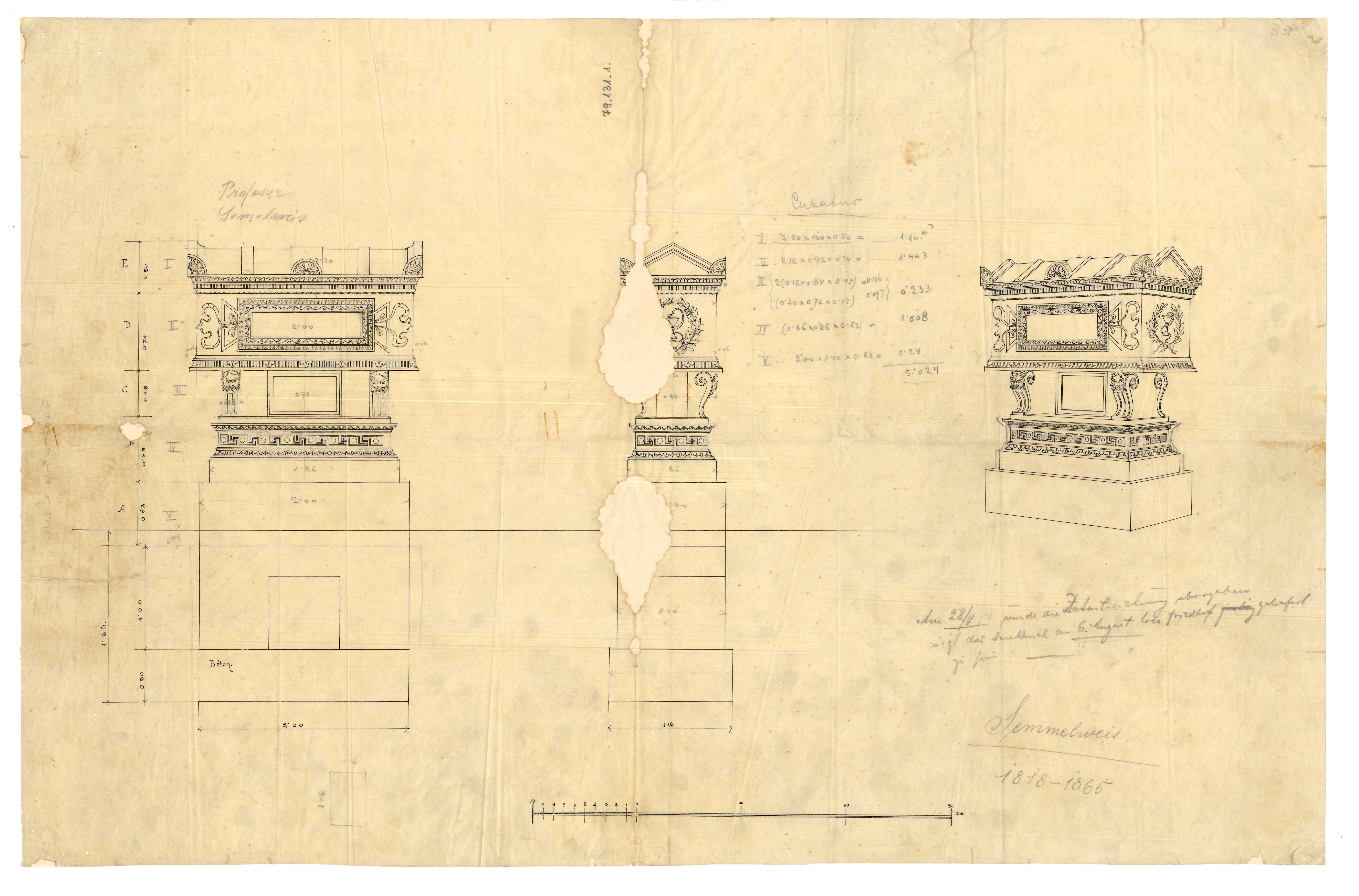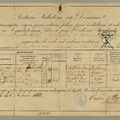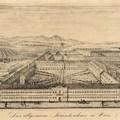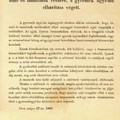
Plan of tombstone Semmelweis was designed by Albert Schickedanz. Josef Baltzer foreman-builder, mason. 1894 (black ink)
Bacteriological research verified Semmelweis’s claims after his death, and even though his disciples carried on with his clinical research and there was no doubt about the recognition of his work, conscious efforts to recognise him as one of the medical greats only began in 1891. The closing of the Vienna cemetery where Semmelweis was buried provided the opportunity to transfer his remains to Hungary and inter them in an honorary grave, including him in the pantheon of Hungarian scientists and artists established in the Kerepesi Street cemetery. The Semmelweis Memorial Executive Committee jointly established by the Medical Faculty of the University of Pest and the Budapest Royal Medical Association was tasked with providing a fitting grave for the physician and scientist, having an artistic portrait made, while also preserving, translating and issuing a collection of his works. In addition to starting an international collection for his tomb, donations were also accepted for a sculpture to be erected in a public space. They wished to spread and promote his recognition both nationally and internationally. In 1894, Albert Schickedanz (1846–1915) completed a marble sarcophagus meant to convey universal esteem, and its dedication ceremony was part of an international demographic convention.
The Memorial Committee only completed its tasks in 1906 when the sculpture of Semmelweis by Alajos Stróbl (1856–1926) erected in Erzsébet Square was unveiled in the presence of illustrious international scientists. This sculpture was later moved and re-erected in front of St. Rókus Hospital. According to the specifications of the Committee, Semmelweis was depicted wearing Hungarian national attire, but the simple clothing of the other figure in the sculpture, a mother expressing her gratitude, was meant to represent mothers all over the world. Újvilág Street, where the original building of the Obstetrics Clinic was located, was renamed Semmelweis Street and a memorial plaque was placed above the gate of the house where Semmelweis was born. Semmelweis finally assumed his deserved place in the pantheon of Hungarian doctors when the Royal Medical Association named the newly built assembly hall in its Szentkirályi Street headquarters after him (1912), and his portrait painted by Lajos Jámbor (1884–1951) was placed on its wall in 1923. Semmelweis’s name and accomplishments have been preserved by many master-works of art, cinema and literature throughout the world, but were only provided with a final deserved celebration by converting his house of birth into a museum bearing his name and establishing a final resting place for his remains in its garden (in 1964). The arc of his journey is now complete from cradle to grave and his remains are lovingly guarded by the stone monument of the Semmelweis house in Tabán. In 2013, UNESCO declared Semmelweis’s scientific works a universal part of the Memory of the World.






